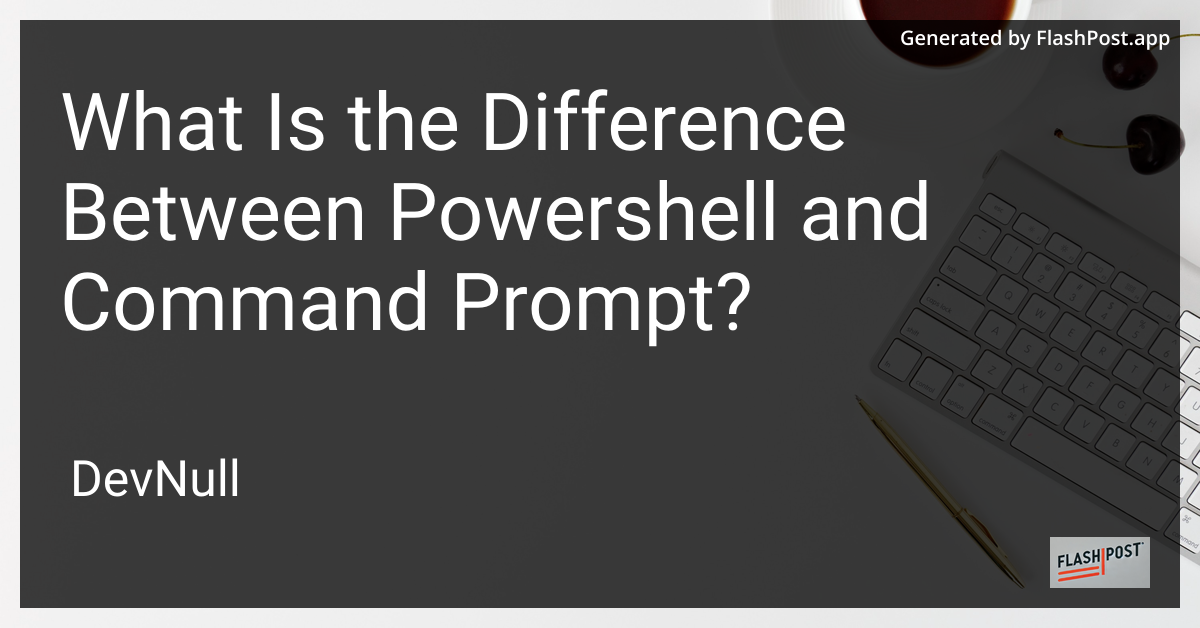

What Is the Difference Between Powershell and Command Prompt?
In the realm of Windows operating systems, two command-line interfaces stand out: PowerShell and Command Prompt. Both tools are essential for system administrators and developers, yet they serve distinct purposes and offer different capabilities. Understanding the differences between PowerShell and Command Prompt can significantly enhance your workflow and optimize your system management tasks.
Command Prompt (CMD)
Command Prompt, often referred to as “CMD,” is the traditional command-line interface for Windows operating systems. Originating from the MS-DOS environment, CMD is predominantly text-based and provides a straightforward way to interact with the operating system.
Key Features of Command Prompt:
- Simple UI: CMD offers a simple and minimalist command-line interface.
- Basic Commands: CMD supports a variety of fundamental commands for file manipulation, disk operations, and system configuration.
- Batch Files: Users can automate tasks using batch files with
.batextensions. - Legacy Support: CMD is an ideal tool for users familiar with DOS commands and batch scripting.
PowerShell
PowerShell is a more modern command-line interface and scripting language designed by Microsoft. It extends the functionality provided by Command Prompt and introduces more complex scripting capabilities, making it an advanced task automation and configuration management framework.
Key Features of PowerShell:
- Object-Oriented: Unlike CMD, PowerShell processes data as objects rather than text strings, enabling more sophisticated data manipulation.
- Rich Scripting Language: PowerShell supports advanced scripting capabilities involving loops, conditionals, and error handling.
- Cmdlets: PowerShell has a plethora of built-in cmdlets (command-lets) for carrying out specific tasks, from file manipulation to service configuration.
- Remote Access: PowerShell allows users to administer computers remotely, adding convenience for network administrators. For more information, you can refer to PowerShell Remote Access.
- Integration with Other Tools: PowerShell can integrate with other Microsoft products and services, such as Active Directory. To learn about changing display names in Active Directory using PowerShell, visit Change Display Name in Active Directory PowerShell.
- Cross-Platform: With the introduction of PowerShell Core, it is now available cross-platform, supporting Windows, macOS, and Linux.
- Gist Management: PowerShell provides capabilities to upload, download, and edit Gists. For more details, see Upload/Download Gist PowerShell.
Key Differences
| Feature | Command Prompt | PowerShell |
|---|---|---|
| Data Handling | Text-based | Object-oriented |
| Scripting | Basic batch scripting | Advanced scripting language |
| Cmdlets | No cmdlets | Extensive library of cmdlets |
| Remote Access | Limited | Advanced remote management capabilities |
| Cross-Platform | Windows only | Cross-platform (Windows, macOS, Linux) |
Conclusion
While both Command Prompt and PowerShell are integral to Windows, PowerShell’s advanced capabilities make it a more versatile tool for complex scripting and automation tasks. It excels with its object-oriented approach and extensive range of cmdlets, making it a preferred choice for system administrators and developers seeking a powerful command-line interface. For simpler tasks or those rooted in M-DOS traditions, Command Prompt offers a straightforward and reliable option.
In summary, understanding the strengths of both tools is key to optimizing your workflow and achieving efficient system management.
